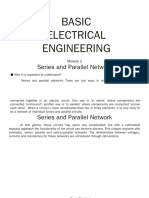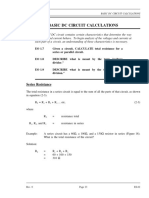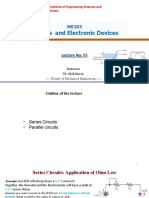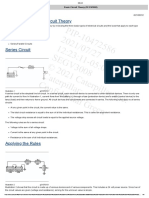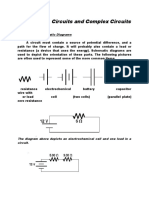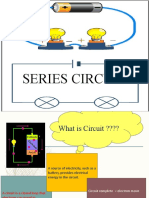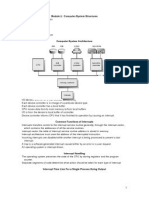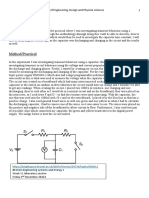0% found this document useful (0 votes)
23 views12 pagesDC Circuits
The document provides an overview of basic DC circuit analysis, focusing on series and parallel circuits, including their rules and calculations. It explains concepts such as voltage dividers, current dividers, Kirchhoff's Current Law, and Kirchhoff's Voltage Law, along with mathematical representations. The analysis includes examples to illustrate how to determine circuit voltages, currents, resistances, and power in both series and parallel configurations.
Uploaded by
friendleecoCopyright
© © All Rights Reserved
We take content rights seriously. If you suspect this is your content, claim it here.
Available Formats
Download as PDF, TXT or read online on Scribd
0% found this document useful (0 votes)
23 views12 pagesDC Circuits
The document provides an overview of basic DC circuit analysis, focusing on series and parallel circuits, including their rules and calculations. It explains concepts such as voltage dividers, current dividers, Kirchhoff's Current Law, and Kirchhoff's Voltage Law, along with mathematical representations. The analysis includes examples to illustrate how to determine circuit voltages, currents, resistances, and power in both series and parallel configurations.
Uploaded by
friendleecoCopyright
© © All Rights Reserved
We take content rights seriously. If you suspect this is your content, claim it here.
Available Formats
Download as PDF, TXT or read online on Scribd
/ 12





